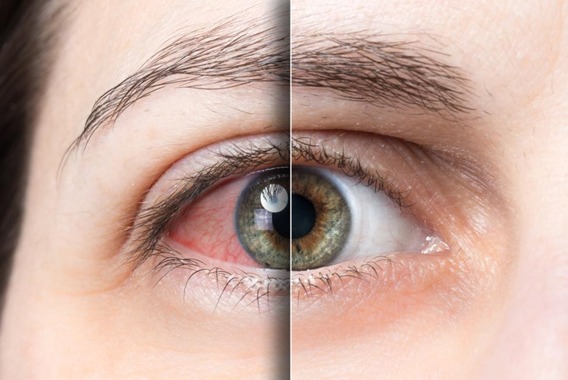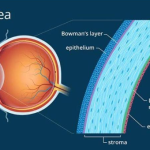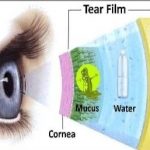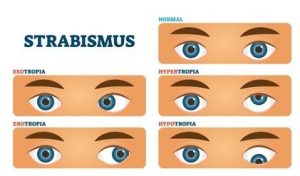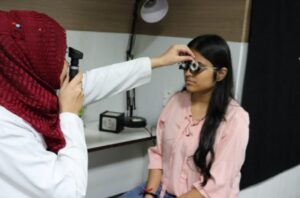“ Dry eye syndrome” is a common disorder of the tear film that results from inadequate tear production, and excessive tear evaporation or abnormality in mucin & lipid components of the tear film.
Dry eye is multifactorial diseases of the tears & ocular surface that results in symptoms of discomfort, visual disturbance, and tear film instability with potential damage to the ocular surface .
Consequences of a dry eyes rage from subtle but constant eye irritation to significant inflammation and even scarring in front surface of the eye.
Dry Eye Causes:
Some causes of dry eye –
- Blepharitis (when eyelids are swollen or red)
- Entropion (when eyelids turn in); ectropion (eyelids turn outward)
- Looking at a computer screen for a long time
- Using contact lenses for a long time
- Having refractive eye surgery, such as LASIK
- Smoking
- Medications
- Health conditions
- Indoor Environment
- Aging
- Allergy and cold medicines.
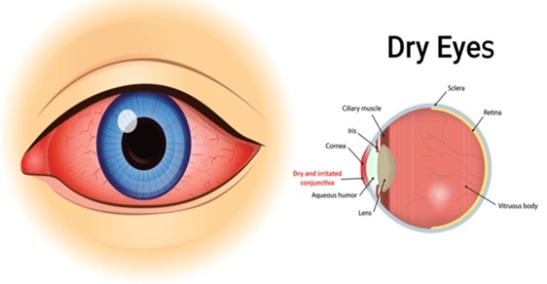
Dry Eye Signs:
- Hyperemia
- Tear debris
- Fast tear break uptime
- Conjunctival and corneal dryness
- Conjunctival and corneal xerosis
- Bitot’s Spots
- Xerophthalmic fundus
- Punctate epitheliopathy
- Keratinization of epithelium
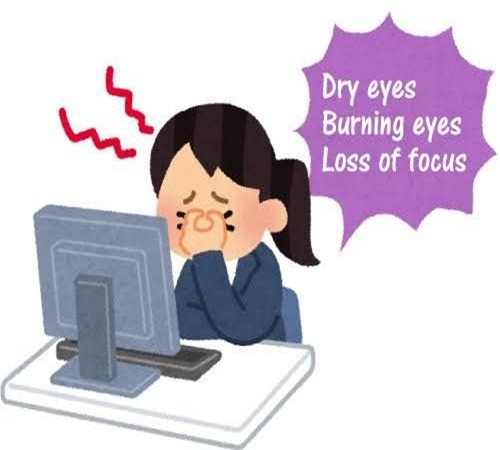
Dry Eye Symptoms:
A person with Dry Eye syndrome will experience the following symptoms:
- Pain
- Photophobia
- Burning & stinging
- Grittiness
- Foreign body sensation
- Itching
- Redness
- Blurring of vision
- General discomfort
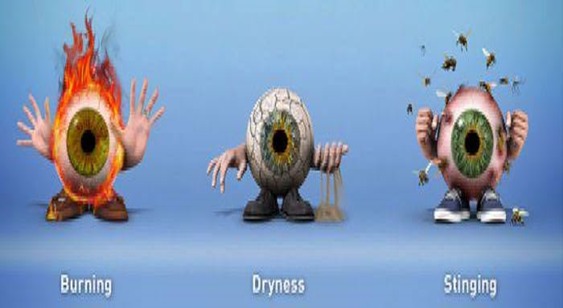
How Is Dry Eye Examination Diagnosed?
In clinics or any Eye-care centres, the Optometrist or the Ophthalmologist will begin the dry eye diagnosis process with a comprehensive eye examination. He or she will look at your eyelids and the surface of the eye. They will also check how you blink.
Many different tests help diagnose dry eyes. The common test for measures the quality or the thickness of your tears are the followings, _
- Tear Breakup Time
- Epithelial Staining
- The Schirmer Test
- Rose Bengal Test
- Meibomian Gland Evaluator
Dry Eye Complications:
For people who have dry eyes problems these complications occur:
- Irregular Astigmatism
- Burning sensation
- Dryness
- Irritation
- Blurry vision
- Overcorrection
- Underrcurection
How Is Dry Eye Treated?
At present, there is no cure for dry eye. The following treatment modalities have been tried with the variable result:-
- Supplementation with tear substitutes
- Topical Cyclosporine
- Topical retinoids
- Steroid eye drops
- Warm compresses
- Nutritional supplements
- Wear quality sunglasses
- Reducing Contact lens wear etc…
The best foods for dry eyes are those that are rich in omega-3fatty acids.
Superior sources of omega-3fattyacids for dry eyes are these following fish and seafood :–
- Salmon
- Halibut
- Sardines
- Herring
- Oysters
- Tuna
For a vegetarian alternative, the following fresh vegetables, grains & nuts also contain omega-3fatty acids :-
- Kale
- Spinach
- Broccoli
- Cauliflower
- Flaxseed oil
- Peanut butter
- Oatmeals
- Walnuts
Home care – You can also try the various home remedies available for dry eyes that can be implemented at home.
- Hydration
- Blinking frequently
- Eye Hygiene
- Reduce near work.
Things to Avoid: Dry Environment, AC, Computer Use, Coffee Consumption, Acidic Foods, Smoking.
Conclusion:
The healthy tear film is essential to the optics of crisp vision. When one has Dry Eye syndrome, the quality or quantity of tears is insufficient, so the health of that person’s cornea may suffer. In some cases, the cornea also becomes inflamed. The visual quality is also affected and one has blurry eyes.
So if you are suffering from a dry eyes problem, please visit your eye-care specialist for a decent solution.
References:
- Mohammad-Ali Javadi, Sepehr Feizi Journal of ophthalmic & vision research 6 (3), 192, 2011 https://scholar.google.com/scholar?q=related:bCcU0vkPRpoJ:scholar.google.com/&hl=en&as_sdt=0,5#d=gs_qabs&u=%23p%3DbCcU0vkPRpoJ
- William Stevenson, Sunil K Chauhan, Reza Dana Archives of ophthalmology 130 (1), 90-100, 2012 https://scholar.google.com/scholar?q=related:bCcU0vkPRpoJ:scholar.google.com/&hl=en&as_sdt=0,5#d=gs_qabs&u=%23p%3DO5BuYcG0tbgJ
Images : 1 , 2 , 3 , 4 , https://images.app.goo.gl/d6ALHsQ7xEREeLwb6 , https://images.app.goo.gl/n5auRfeXQS1QHhAHA , https://images.app.goo.gl/ddB7onqCmL3SPXrm6 , https://images.app.goo.gl/6V1jwQ5MGJMfCU5f8 ,

